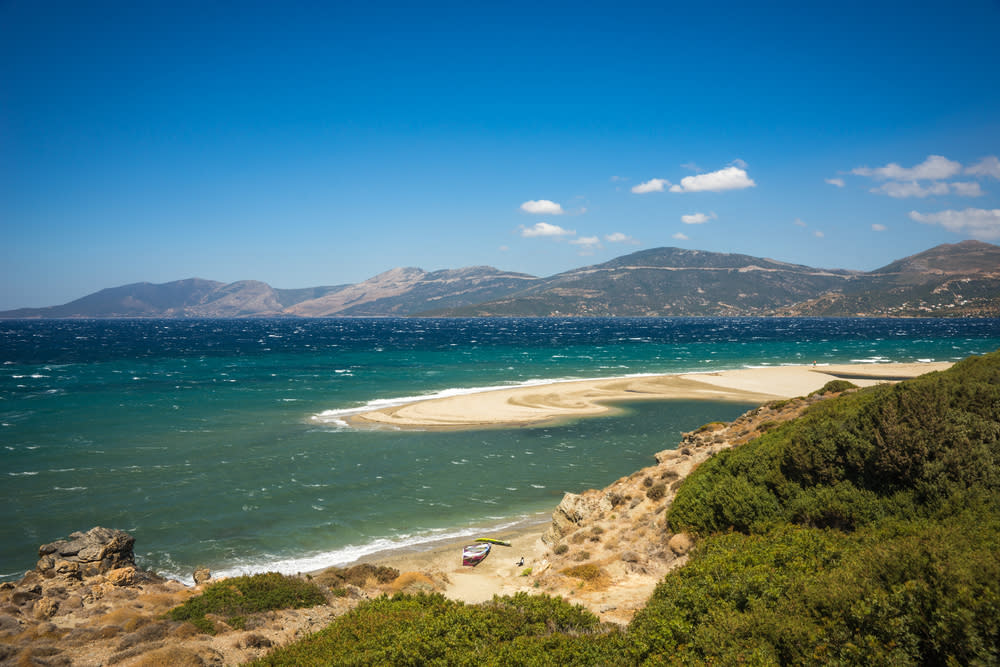More from Evia
Main Menu
- 00:00
- 06:00
- 12:00
- 18:00
- 23:00
Evia : Next 24-Hour Weather
Today - 18th April 2025
Sunrise 06:45
Sunset 20:04
Tomorrow - 19th April 2025
Sunrise 06:45
Sunset 20:04
Holiday Weather Now
Sorted by popularity:
Updated at 18:00 GMT
-
Temp feels like17°C62°F
-
Length of day13h 19m
-
Pressure29" (1012 hpa)
-
Visibility10 km (6miles)
-
Wind speed6 km/h
Sunrise 06:45
Sunset 20:04
-
Temp feels like:
17ºC (62 ºF)
-
Length of day:
13h 19m
-
Pressure:
29" (1012 hpa)
-
Visibility:
6 miles (10 km)
-
Wind speed:
6 km/h
Weather Overview for Evia , Greece
The island of Evia also known as Euboea is the second largest island in the country of Greece after Crete. It is separate from mainland Greece by a narrow channel of water. The weather here is a sub-tropical Mediterranean climate.
You can expect around 3000 hours of sunshine per year and an average temperature in excess of 220C. You can expect up to 275 sunshine days per year. Summers are very long, hot, and dry with heat waves, showers, and thunderstorms possible. The Etesian winds blow from the sea throughout the summer cooling temperatures. The winters are mild and quite wet, with snow possible. Yearly precipitation is mild being around 400 mm per year.
The island is a long and narrow sea horse-shaped, stretching over the Aegean Sea, it can be seen throughout the island a mountain range and the highest mountain is Mount Dirphys. The golden sandy/pebbly beaches, clear blue/green waters, mountainous landscape, and steep cliffs make it a beautiful destination to holiday. You can check the weather forecast before you book your holiday to see what the weather will be like during your chosen time of year.
In Summer in Evia, you can expect temperatures to range from an average high of 310C to 330C.
Temperatures in this season are not likely to drop below lows of 200C. This season does receive the least rainfall for the whole year, with the driest month being July.
You can expect up to 12 hours of daily sunshine. The hottest months are July / August with June being the coolest. Sea temperatures range up to highs of 250C.
In Autumn temperatures start to decrease with September reaching an average of 240C but November dropping to an average of 160C.
This season is quite wet with between 4 to 9 days of rain each month. The hottest month in this season is September and the coolest is November.
The amount of daily sunshine hours does decrease steadily, down to 5 hours of sunshine in November.
Sea temperatures do become cooler dropping to 190C in November.
In Winter temperatures range from averages of 100C reaching highs of 140C. You can expect between 9 and 12 days of rain per month in this season and between 4 and 5 hours of sunshine hours per day.
The most rain falls within this season with December receiving the most rain than any other month of the year.
The coldest month is January in this season. Sea temperatures are the coldest in this season dropping to lows of around 140C.
Snow can fall in this season with an average of 1 to 2 days per month.
In Spring temperatures slowly start rising reaching averages of 210C in May. The coldest month in this season is March and is the wettest month in this season but then precipitation does start to decrease quite a lot.
Daily sunshine hours begin to increase again and you can expect between 6 and 9 hours of daily sunshine hours per month. Sea temperatures begin to rise again too making their way up to 18 0C in May.

















